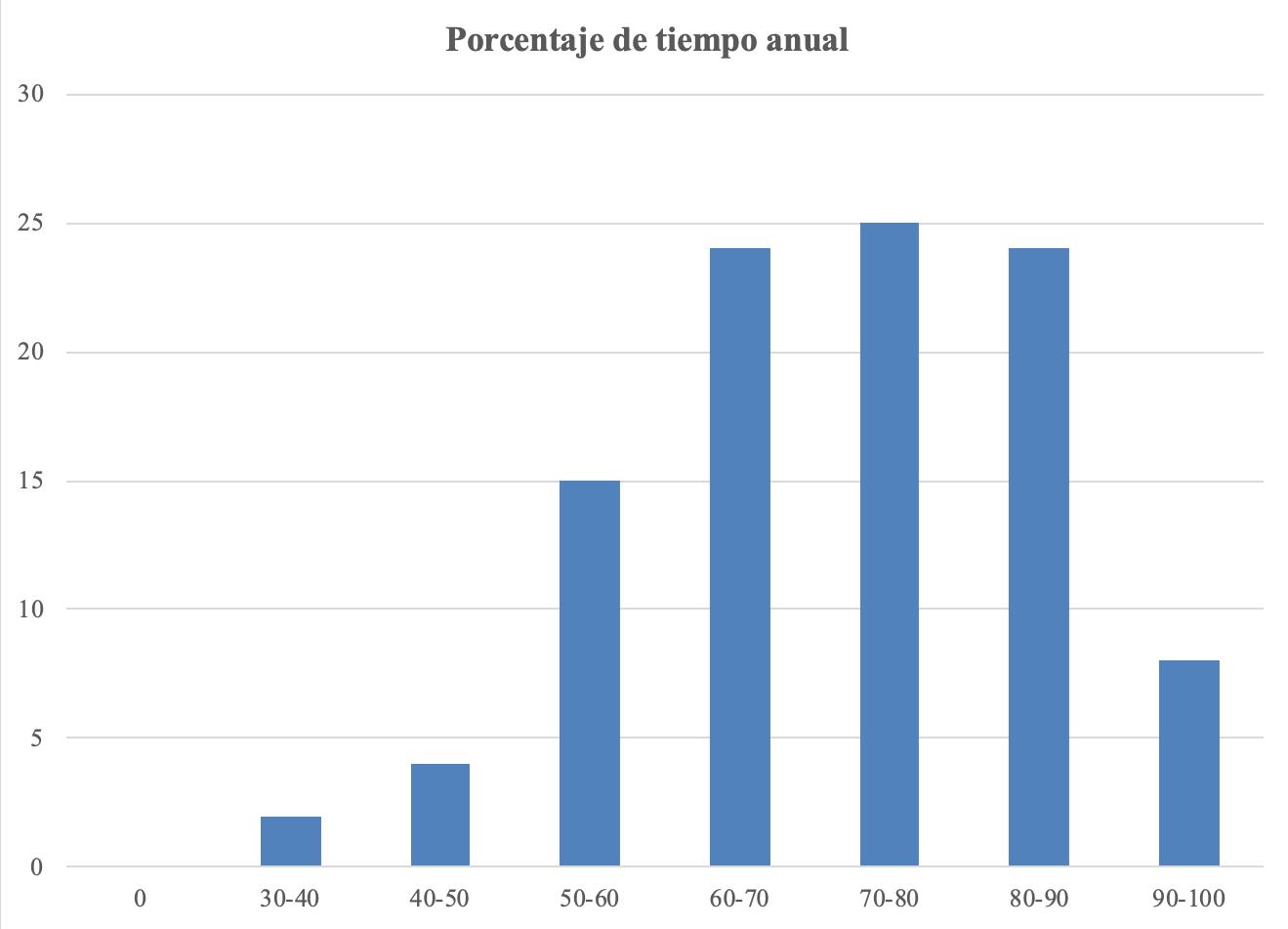
27 minute read
AN EVALUATION OF THE IMPROVEMENT OF THERMAL COMFORT WITH THE INCORPORATION OF SUSTAINABLE MATERIALS IN SELF-BUILD DWELLINGS IN BOSA, BOGOTA, COLUMBIA
Recibido 12-08-2019 Aceptado 09-12-2019
Advertisement
FRANZ CALDERON URIBE Doctor en Comunicación visual en Arquitectura y Diseño Investigador Asociado Universitaria Agustiniana, Uniagustiniana, Colombia https://orcid.org/0000-0002-3008-7552 franz.calderon@uniagustiniana.edu.co
RESUMEN En este artículo se evalúa cómo la incorporación de materiales sostenibles mejoró el confort térmico en un hábitat en proceso de autoconstrucción, en el barrio San José de Bosa, en Bogotá, Colombia. El problema del confort se ha abordado como una condición fundamental del hábitat que responde a una necesidad de cobijo, de tener un espacio propio, sin importar la forma en que este espacio responda a las variables climáticas. Por otra parte, el uso de materiales sostenibles ha ido incorporando beneficios ambientales, en especial en las grandes ciudades, debido a los altos índices de contaminación actuales. En los barrios periféricos, como el aquí abordado, el cemento, el ladrillo y el acero son los materiales más usados en la construcción. Concretamente, se expone en lo que sigue un estudio de caso en el que se hicieron mediciones periódicas con el objetivo de determinar el balance térmico y el modo en que los materiales empleados respondían a las condiciones climáticas existentes. Con el fin de optimizar no solo el confort térmico sino la sostenibilidad del hábitat, se incorporaron materiales sostenibles, para luego realizarse nuevas mediciones, a partir de las cuales se determinó que los nuevos materiales mejoraron el confort térmico del hábitat, al comprobarse un aumento de 6ºC en la temperatura media interior.
Palabras clave hábitat, materiales alternativos, diseño sustentable, balance térmico
ABSTRACT This article evaluates how the incorporation of sustainable materials improved thermal comfort in a habitat using the self-build process, in the San José de Bosa neighborhood in Bogota, Colombia. The problem of comfort was addressed as a fundamental condition of the habitat. The habitat responds to a need for shelter, understood as the need to have one’s own space regardless of the way this space responds to climate variables. The use of sustainable materials provides environmental benefits, especially for large cities due to the current high levels of pollution (Fernández-Agüera, DomínguezAmarillo, Alonso, & Martín-Consuegra, 2019). In these peripheral neighborhoods, cement, brick and steel are the most commonly used construction materials. A case study was carried out in which periodic measurements were made with the objective of determining the thermal balance and how the materials used responded to the existing climate conditions. In order to improve not only the thermal comfort but also the sustainability of the habitat, sustainable materials were used. Finally, new measurements were made to determine if the new materials improved the thermal comfort of the habitat and an increase of 6 °C in the average indoor temperature was established.
INTRODUCTION
This article is the result of an academic research project whose main objective is the thermal analysis of an informal habitat in the process of self-construction located in Bosa, a popular district located south west of Bogotá. The study determined that, with the incorporation of a sustainable constructive solution, it is possible to optimize thermal comfort in a self-built habitat. The thermal analysis in this type of informal housing has not been studied in Colombia, however there is background on this issue in other Latin American cities, such as Guayaquil (Ecuador) where case studies have been carried out revealing that used materials, especially on the roof, did not generate thermal comfort (Macias, Soriano, Sanchez and Canchingre, 2015).
The comparative analysis of different works and investigations could determine that in developed countries there are some differentiating factors: there is a very clear regulation that obliges construction companies to comply with minimum quality standards, especially around used materials, in addition to having parameters for evaluation of thermal and acoustic comfort. In some Latin American developing countries it has been shown that the popular and self-built habitat does not take into account bioclimatic aspects or referred to thermal comfort, and that materials used are reused or they are temporary, due to the informality of the built habitat.
The project evaluated the improvement of thermal comfort in a self-built habitat, with traditional materials, cement, brick, reused materials, zinc tiles, asbestos cement tiles and wooden elements, among others. Existing materials were replaced by construction elements obtained from the recycling of Tetrapak containers and insulation of vegetal origin. The investigation was able to determine that the constructive element that most affected the thermal comfort of the habitat was the roof, for this reason it was replaced by incorporating sustainable materials that strengthened the thermal insulation of the habitat and, therefore, increased the thermal comfort of the interior of the habitat object of the study. which means that the person does not feel too hot or too cold (Godoy Muñoz, 2012).
In the last 30 years, this concept has taken a very relevant character in the design and construction of homes, the product of engineering advances, air conditioning systems and air conditioning. The various social and energy consumption implications that this entails make it necessary to analyze and reinterpret traditional ways of life in regions with tropical climates, and to seek solutions directly related to bioclimatic architecture. For example, naturally ventilated buildings not only give occupants a sense of comfort and consume less energy, but are also linked to their culture with a particular way of understanding the interior-exterior relationship and even privacy (Godoy Muñoz, 2012).
In addition to bioclimatic aspects, it is important to mention Fanger’s theories, based on experiments carried out on 1296 young people in thermal chambers, where static heat transfer models were used. In these studies, clothes and activity of participants were analyzed, while they were exposed to different thermal environments. Participants should indicate how they felt in relation to heat and cold, using the seven points of the ASHRAE thermal sensation scale, from (-3) to (+3), which considers only integer values and where negative values represent the sensation of cold; the positive ones, the heat one; and the value 0, the neutral thermal sensation. Another part of the study was that the participants controlled the environmental thermal conditions, adjusting them until they felt in comfort. Fanger’s model combines theories of thermal balance with physiology and thermoregulation to determine a range of comfort temperature, where occupants of the building feel good. According to these theories, the human body uses physiological processes such as sweating, tremor and vasodilation with the aim of maintaining the thermal balance between the heat produced by the metabolism and the loss of heat throughout the body. Maintaining this heat balance is the first condition to achieve a neutral thermal sensation. However, Fanger observed that man’s thermoregulatory system is so efficient that it is capable of creating thermal equilibrium within wide limits of environmental variables, even if there is no comfort (Godoy Muñoz, 2012).
STATE OF THE ART
Thermal comfort is defined in ISO 7730 as “that condition of the mind in which satisfaction with the thermal environment is expressed” (Robledo-Fava et al., 2019)we analyze the influence of the designer’s choice of values for the human metabolic index (met. Although this definition is widely accepted, its translation into quantifiable physical parameters is difficult. Basically, and in general terms, man qualifies an environment as comfortable when no type of thermal discomfort is present. The first comfort condition is thermal neutrality, To be able of predicting conditions where thermal neutrality takes place, Fanger investigated physiological processes of the body that occur near neutrality. Finally, he determined that the only physiological processes that influence the thermal balance in this context are: the average skin temperature and the rate of sweating, processes that are a function of the level of activity. With subsequent investigations, Fanger obtained a linear relationship, precisely between activity level and sweating rate. Another investigation, where participants with standard clothing took part in a series of tests inside a thermal chamber while performing four
different activity levels, served to demonstrate a linear relationship between activity level and skin temperature. After replacing these two values with their respective linear regressions in the thermal balance equation, Fanger obtained his comfort equation, which predicts the necessary conditions for the occupant to feel thermal neutrality (Macias et al., 2015). greenhouse gases and provided better indoor thermal comfort. In this way, natural insulators such as sheep wool, goat wool and horsehair were used, which are better processed and characterized in terms of moisture absorption, thermal conductivity, thermo-gravimetric analysis (TGA) and differential scanning calorimetry (DSC).
The analysis of thermal comfort is a recurring theme in case studies and analyzes of energy consumption associated with the sustainability of a construction. In the last five years it was noted that developing countries are beginning to incorporate sustainability concepts associated with the resolution of typical problems in the region, such as earthquakes and the use of recycled materials (Sekhar and Nayak, 2018). An example of this new trend is the development of a floor built on recycled tires that absorb the movements produced by an earthquake, destined to the construction of habitats in Ecuador.
Traditionally, these studies focused on measuring the interior and exterior spaces in order to determine the physical characteristics of materials, energy consumption related to regulations of the country where research was conducted. Today, there is a growing concern in Western Europe that greater insulation and sealing of residential buildings increases the risk of overheating. In this sense, Jones, Goodhew and de Wilde (2016) carried out temperature monitoring of two identical houses in the southwest of the United Kingdom that were built with low energy standards (Code for sustainable homes Level 5). Temperature data were examined using the established static overheating criteria (CIBSE A Guide) and an adaptive thermal comfort standard (BSEN15251). It was found that houses can be considered uncomfortably warm during summer and have the risk of overheating. The study suggested that occupant behavior plays an important role in reducing or increasing internal temperatures.
Likewise, thermal comfort has been associated with the consumption of natural resources which affects the environment of the respective region. That happened in the state of Jammu and Kashmir in India, which experienced a severe energy crisis due to low energy availability per capita. Such a situation forced the population to extensive wood consumption, which led to the deforestation of the environment, so it was mandatory to move towards a complete sustainable energy strategy. A study (Ahmed, Qayoum and Mir, 2019) was able to determine that efficient and sustainable thermal insulation of buildings was a great opportunity to generate and encourage energy savings. This focused on the use of new insulating materials that incorporate recycled and sustainable components. The constant use of insulating materials in buildings, not only reduced energy consumption, but also reduced the emission of Among other of the reviewed works, Fernández, Domínguez, Alonso and Martín (2019), on thermal comfort and indoor air quality (IAQ) in residential buildings with different degrees of tightness, stand out in two climates in Spain. The project compared the behavior of the occupied areas during the day and at night. The IAQ of the buildings studied, erected before the energy efficiency regulations were in force (1939-1979) and lacking mechanical ventilation, their tightness was compared. The reason for that approach was that, in such circumstances, the air change depends on uncontrolled natural ventilation (=open windows), consequently, on the outside temperature. Relative humidity was also taken into account, given the condensation that it can be induced when ventilation is insufficient. Finally, it was determined that, in winter, in both climates, CO 2 levels were higher than 1200 ppm, with averages of the order of 1900 ppm in Madrid and 1400 ppm in Seville, and higher during the night than during the day. Air changes every hour, mediated by infiltration, seemed to be insufficient to keep the house in healthy conditions, in addition to presenting a high risk of surface condensation in the more hermetic houses. That is, and despite having forced ventilation, buildings needed natural ventilation.
Finally, it is worth mentioning the research of Chowdhury and Neogi (2019), whose purpose was to analyze the thermal performance of walls and roofs, commonly used in the residential construction sector in India. This was done by determining the overall heat transfer coefficient or the U value, using the protected hot box test facility. The general test procedure agreed with BS EN ISO 8990: 1996. Subsequently, the effect of the variation of the differential air temperature on the overall heat transfer coefficient of the reinforced concrete roof and three types of typologies used in the construction of brick walls made of baked clay was studied. From the regression analysis, the U value of walls and roof could be easily evaluated for any differential temperature, as experienced by buildings in various climatic zones in India. It was also possible to determine that buildings provided thermal comfort through the interaction between the external environment and the building elements that comprise it, walls, roofs and glazing. A good recognition and previous analysis of the thermal performance of materials used in walls, roofs and glazing can, in short, help to estimate the heating or cooling loads in the proposed ventilation and air conditioning systems.
METHODOLOGY
This project presents a case study, in which two methods were used: the first one, defined by the protocol given by ISO 7730 standard, corresponds to the analysis of climatological aspects of the environment, common in this type of studies (temperature, humidity, wind speed, among others); and the second, characterization of the existing materials that aims to assess its thermal inertia through static thermal comfort analysis tools (Mahoney figure and Givoni diagram).
ISO 7730 Fanger Method states that not only thermal balance is necessary in a space for thermal comfort; in addition to having an adequate temperature, the following should be taken into account:
a. The characteristics of clothing: isolation and total area of the same. b. The characteristics of the type of work: metabolic thermal load and air speed. c. The characteristics of the environment: dry temperature, average radiant temperature, partial pressure of water steam in the air and air speed.
Taking the model as a starting point, the following characteristics were established:
a) Clothing Characteristics In this case a complete half clothing isolation, 1.0 clo. (clothig). Thermal unit equivalent to thermal resistance of 0.18 m² hr °C/Kcal (Castillo and Huelsz, 2017). Here, users of the analyzed habitat wore clothes to protect themselves from the cold in the area.
b) Work Characteristics Considering the metabolic thermal load and air speed, the figure established by UNE ISO 7726: 2002 standard was used, which determines this value based on the characteristics of clothing, the average temperature and the air speed (Figure 4).
c) Environment Characteristics In this phase of the investigation, all the information on the environment of the analyzed habitat was collected, which was then compared with the data obtained inside the habitat. For this, two devices were used that directly measured the WBGT (Wet Bulb Globe Temperature) thermal index, in addition to the temperature, humidity and temperature of the black balloon. The instrument used was the HT30 Extech model: a measure of air speed and humidity (Figure 1).
The measurements were made between 2:00 p.m. and 5:00 a.m., periodically, once a week, during the months of August, September and October, and the external data were compared with the data inside the habitat (Figure 7). It is necessary to clarify that in this case for the calculation of
Figure 1. Air temperature. Source: Made by the author.
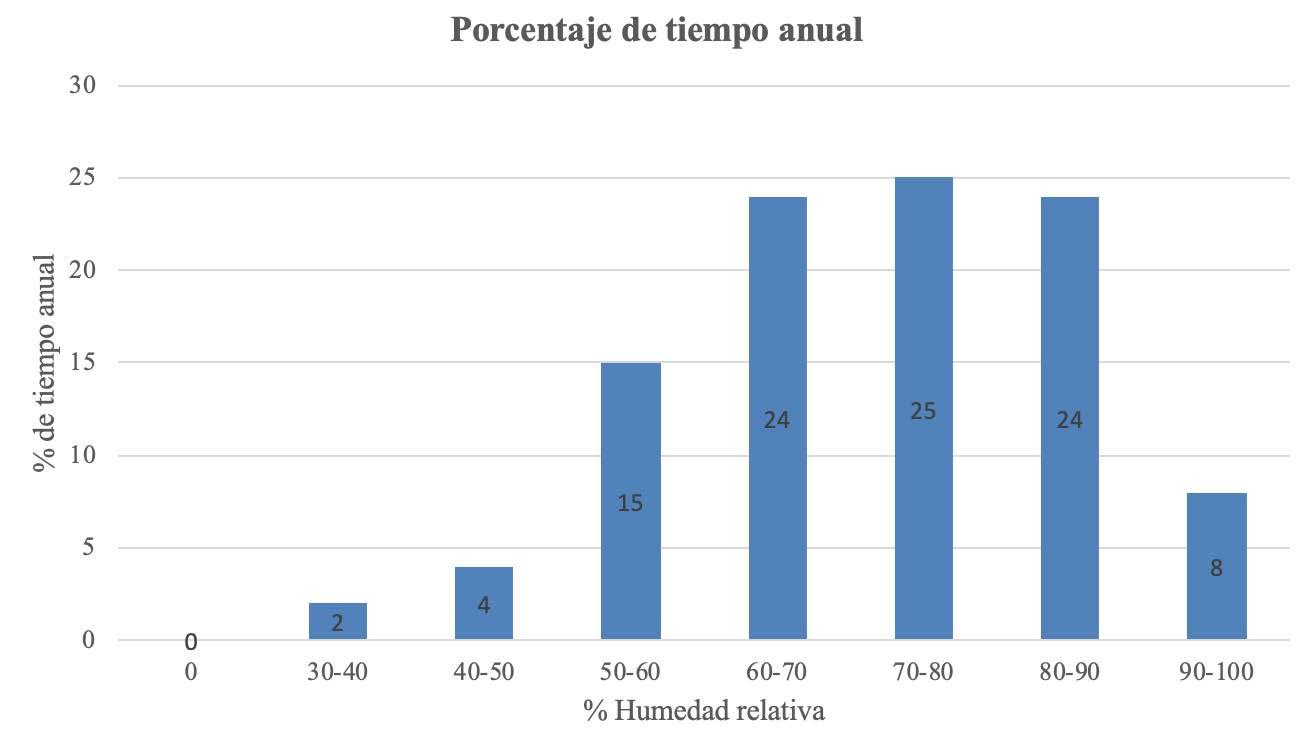
Figure 2. Relative humidity. Source: Made by the author.
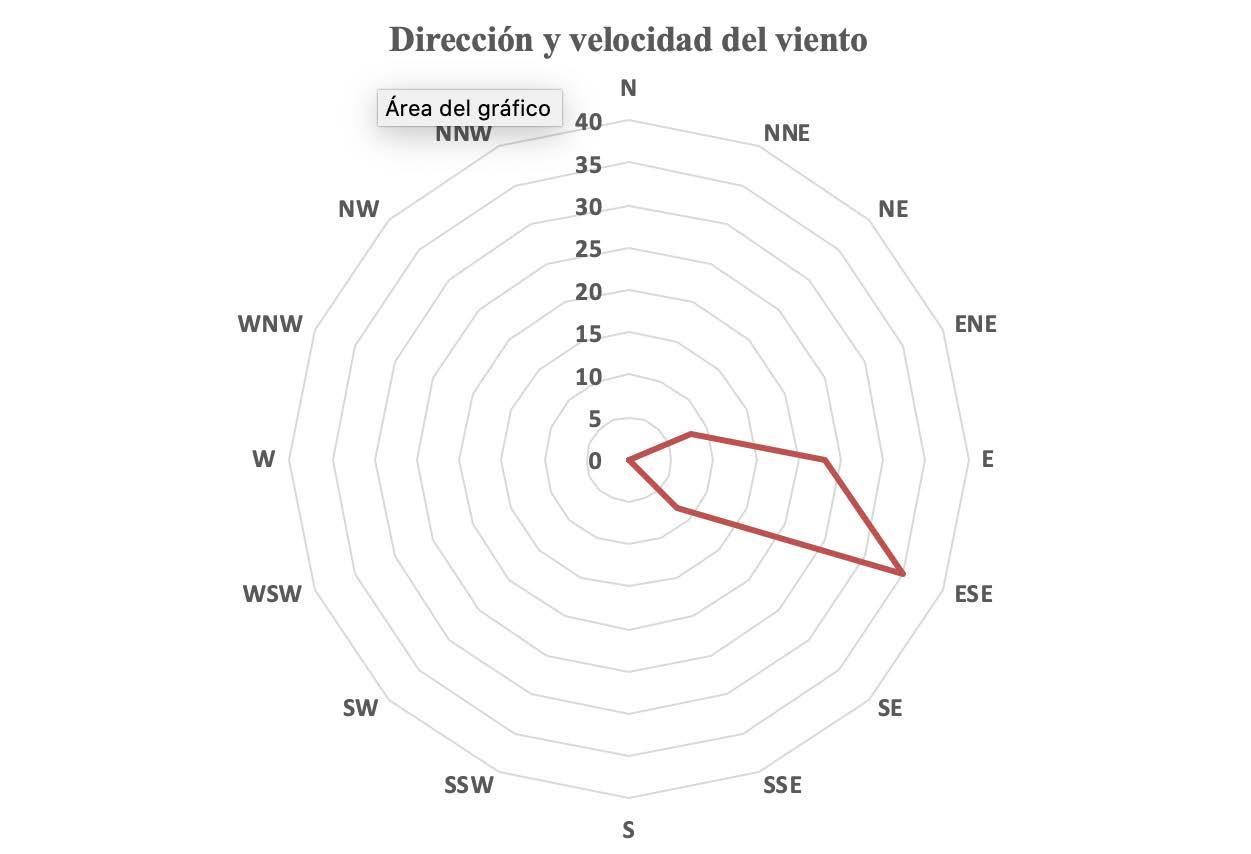
Figure 3. Wind rose of the area. Source: Made by the author.
Clothing Clo
0,5
1 Operating Temperature °C Relative air speed m/s <0,10 0,10 0,15 0,20 0,30 0,40 0,50 1,0
18 -2,01 -2,01 -2,17 -2,38 -2,70
20 -1,41 -1,41 -1,58 -1,76 -2,04 -2,25 -2,42 22 -0,79 -0,79 -0,97 -1,13 -1,36 -1,54 -1,69 -2,17 24 -0,17 -0,20 -0,36 -0,48 -0,68 -0,83 -0,95 -1,35 26 0,44 0,39 0,26 0,16 -0,01 -0,11 -0,21 -0,52
28 1,05 0,98 0,88 0,81 0,70 0,61 0,54 -0,31 30 1,64 1,57 1,51 1,46 1,39 1,33 1,29 1,14
32 2,25 2,20 2,17 2,15 2,11 2,09 2,07 1,99
16 -1,18 -1,18 -1,31 -1,43 -1,59 -1,72 -1,82 -2,12
18 -0,75 -0,75 -0,88 -0,98 -1,13 -1,24 -1,33 -1,59 20 -0,32 -0,33 -0,45 -0,54 -0,67 -0,76 -0,83 -1,07
22 0,13 0,10 0,00 -0,07 -0,18 -0,26 -0,32 -0,52 24 0,58 0,54 0,46 0,40 0,31 0,24 0,19 0,02
26 1,03 0,98 0,91 0,86 0,79 0,74 0,70 0,58 28 1,47 1,42 1,37 1,34 1,28 1,24 1,21 1,12
30 1,91 1,86 1,83 1,81 1,78 1,75 1,73 1,67
Figure 4. Activity level 1.2 met. Source: Made by the author.
the operating temperature only daytime temperature was taken into account since nighttime temperature is outside ranges established by the standard (Figure 4).
These are the values that were taken for the calculation: Tg: 17.7; Ta:16.2 ; Va:0.20 m/s ; Hr:67% ; M:1.2met.
Night measurements allowed determine that the habitat does not present thermal comfort from 9:00 p.m., due to the low outdoor temperature; the analyzed habitat does not have materials that maintain this operating temperature.
Before determining the operating temperature it is necessary to calculate the average radiant temperature:
Tr= tg+1, 9 Tr= 17, 7+1, 9 Tr=18.74 To= A.ta+(1-A).tr To= 0,6. 16,2+ (0,4).18, 74
ANALYSIS OF THERMAL BALANCE CORRESPONDING TO EVALUATED CONDITIONS
The geographical area studied was the district of Bosa in the south of Bogotá, which has temperature variations between day and night: during the day the average temperature is around thermal comfort indexes (18-20 degrees Celsius) (IDEAM, 2007). With this temperature materials used so far would work correctly, however, at night and early morning the minimum temperatures are 7.6 degrees Celsius and the relative humidity reaches 70%, increasing the thermal sensation of cold. From these measurements, two traditional tools were used in this type of analysis: the Mahoney Figure and the Givoni chart (Figures 5 and 6).
In the figure of Mahoney it is specified that walls and roof must have materials with a high thermal inertia (at the time of the analysis, the roof had a low thermal inertia) and that the habitat should have openings between 15 and 25% on facades (Figure 5).
36 Evaluación del mejoramiento del confort térmico con la incorporación de materiales sostenibles en viviendas en autoconstrucción en Bosa, Bogotá Franz Calderon Uribe Revista Hábitat Sustentable Vol. 9, N°. 2. ISSN 0719 - 0700 / Págs. 30 -41 https://doi.org/10.22320/07190700.2019.09.02.03
ESTRÉS TÉRMICO
ENE FEB MAR ABR MAY JUN JUL AGO SEP OCT NOV DIC DÍA Confort Confort Confort Confort Confort Confort Confort Confort Confort Confort Confort Confort NOCHE Frío Frío Frío Frío Frío Frío Frío Frío Frío Frío Frío Frío
INDICADORES
ENE FEB MAR ABR MAY JUN JUL AGO SEP OCT NOV DIC H1 Ventilación esencial (calor y humedad) H2 Ventilación deseable (calor y humedad) H3 Protección contra la lluvia A1 Inercia térmica X X X X X X X X X X X X A2 Dormir fuera A3 Problemas con el frío
RECOMENDACIONES ARQUITECTURALES
POSICIÓN DE LAS ABERTURAS DIMENSIONES DE LAS ABERTURAS Pequeñas, 15 a 25% de la superficie de los muros PLAN MASA Planos compactos con patios interiores ESPACIO ENTRE EDIFICIOS Planos compactos CIRCULACIÓN DEL AIRE Circulación del aire inútil
PROTECCIÓN DE LAS ABERTURAS (*) Protección contra la radiación solar directa
Construcción pesada para fuerte inercia térmica; desfase horario superior a 8 horas ESPACIOS EXTERIORES (*) MUROS Construcción pesada para fuerte inercia térmica; desfase horario superior a 8 horas TEJADO
Figure 5. Mahoney figure for the Bosa area. Source: Made by the author.
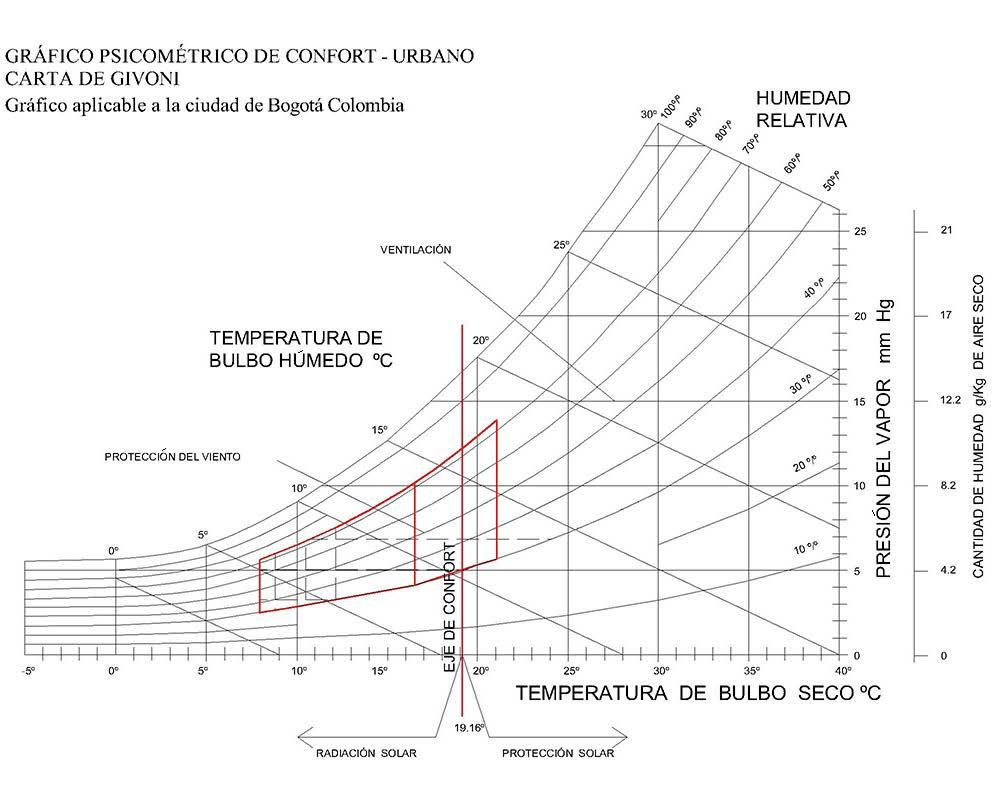
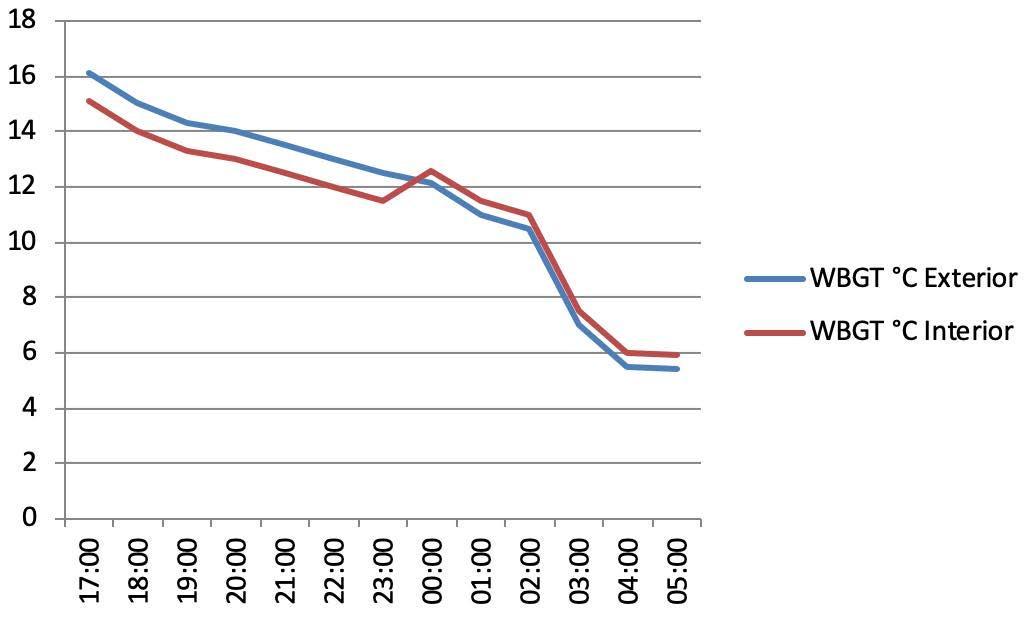
From this initial analysis, the project focused on the housing roof, taking into account materials and analysis of the interior temperature drop (Figure 7).
ROOF
In order to increase the thermal comfort of the habitat in a sustainable way, a characterization of materials used in the existing construction was carried out considering its density, specific heat, thermal conductivity and thermal diffusion (Figure 9). Based on the data obtained and also the variables “economy”, “sustainability” and “thermal conductivity”, the most viable materials were selected, in order to mitigate the shortcomings detected in the thermal study performed (Figure 10).
Although fiber cement and Tetrapak had similar prices, other favorable aspects were found to use the latter: a slight decrease in thermal conductivity and low pollution generated by a material that is the product of recycling. However, it was found that, if only one tile of this material was used, the necessary thermal insulation was not obtained, so, in addition to the outer tiles, Tetrapak sheets were used to form a false ceiling that would allow the habitat to have an air chamber between the two elements (Figure 10).
To respond to the demands of users, the decision was made to change the current roof built in zinc on a wooden structure in poor condition. The new roof was built in Tetrapak, using the existing wooden beams - which were cleaned and reinforced - with a false ceiling of sheets, whose thickness was 2cm and it was manufactured with the same material in order to create an insulation that mitigates the low night temperatures detected by the climatic analysis of the area. Hay cubes with a height of 30cm were added as thermal insulators; material that was selected for its low thermal conductivity, its low price and its vegetable origin, which entails a very low charge for CO 2 emissions. The use of sustainable materials is directly related to its geographic availability, one of the variables taken into account for the calculation of
Material Density (kg/m³) Thermal conductivity (W/(m·K))
Zinc roof tile 7140 106-140
Masonry brick 1700 0,658
Pine wood 650 0,163
Glass 2700 0,81
Fiber cement roof tiles 1250 0,36
Figure 8. Characterization of materials used in the construction of the house. Source: Made by the author.
Description Density kg/m³ Thermal conductivity W/m² ºC Price USD carbono footprint kg/CO²
Fibrocement 1250 0,36 $9 11,84
Sandwich panel 50 0,024 $28 12,5
Polyester 38 0,04 $15 15,04
Tetrapak 900 0,25 $8 0,5
Figure 9. Characterization of materials that improve thermal insulation. Source: Made by the author.

38 Evaluación del mejoramiento del confort térmico con la incorporación de materiales sostenibles en viviendas en autoconstrucción en Bosa, Bogotá Franz Calderon Uribe Revista Hábitat Sustentable Vol. 9, N°. 2. ISSN 0719 - 0700 / Págs. 30 -41 https://doi.org/10.22320/07190700.2019.09.02.03
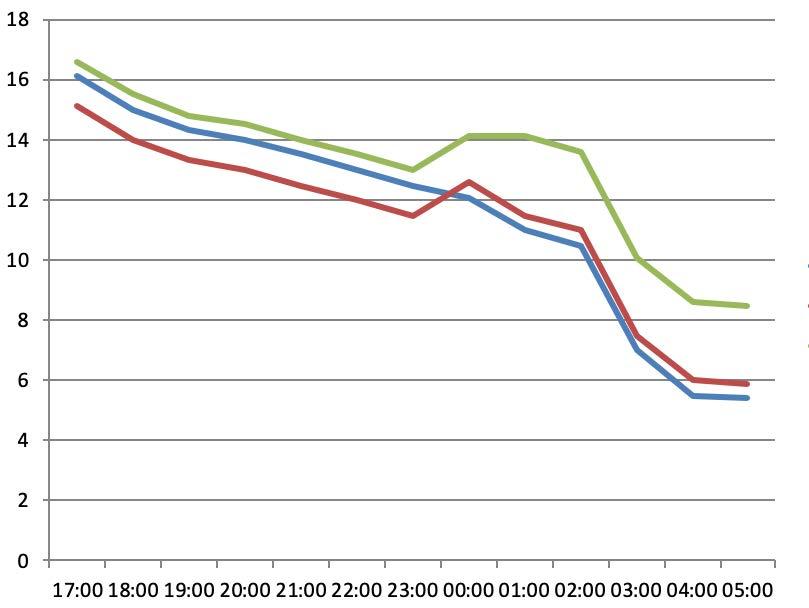
Figure 11. Average temperature before and after the proposed solution. Source: Made by the authors.
Material Price/m² CO² kg Fiber cement roof tiles $9 11,85 Tetrapak roof tiles $8 0.5
Figure 12. Fiber cement and Tetrapak. Price and CO2. Source: ITEC (www.itec.cat.).
the carbon footprint of any material (Sekhar y Nayak, 2018).
RESULTS
At this point, the temperature increase inside the habitat was checked and new measurements were made to determine the average temperature, humidity and thermal stress index. Likewise, measurements before and after the incorporation of the new roof were compared, observing that the difference between the outside and inside temperature was expanded by 6 degrees, so that early morning it was possible to reach an average of 13 degrees inside the habitat (Figure 11).
The analysis of weather measurements yielded the following results: the selected habitat did not show thermal comfort at night or in the early morning; the thermal inertia of materials used in its construction was very low; materials reused both on the facade and on the roof (sheets, zinc and asbestos cement tiles, which have a thermal inertia of 0.8 (W/(m • K)), did not contribute to optimizing thermal inertia. Therefore, it was determined that it was necessary to replace these temporary enclosures used in the construction of the housing cover, which affected the thermal comfort of the analyzed habitat (Figure 7).
Climatological analyzes in which temperature and humidity measurements were made allowed to determine the WBGT (Wet Bulb Globe Temperature) index of thermal stress and to establish that the difference between the external and internal temperature ranged between one and a half degrees Celsius. However, the
temperature in this area of Bogotá between 3 and 5 a.m. is close to 5 degrees, that is, users were really exposed to very low temperatures and outside the operating temperature of thermal comfort (17,21 ° C), which certainly approached those that a street citizen supports in this city (Figure 11). However, an increase of 1ºC was detected after 11:00 p.m. due to the use of appliances, mainly television.
This study could establish that it is possible to increase the thermal comfort of an informal habitat using sustainable materials, which can be a role model in neighborhood improvement plans, proposed by the local government, that is, replacing a procedure in which highly polluting materials, such as cement and steel, have always been used by one in which other materials generated from recycling are used.
This project demonstrated that it is possible to build a sustainable habitat (by using recycled materials and limiting the use of cement) without affecting the budget allocated for its construction and, in turn, improving thermal comfort. This finding can be implemented in the current housing improvement policies proposed since the 1980s and where sustainability was not a variable taken into account for the development of the standard. It was calculated that the use of Tetrapak in this improvement allowed reducing CO 2 emissions by 80% (Figure 12). between lighting and hydrometry in Argentina (Boutet, Hernández and Jacobo, 2020), and a proposal for a new adaptive comfort model in Chile, which seeks to adapt the lower limit of the thermal comfort threshold in order to develop a standard that better reflects the needs of inhabitants and the socio-economic culture (Pérez-Fargallo et al., 2018)including adaptation to external temperatures, opening windows and changing clothing. In this regard, two international standards provide the fundamental basis to model the necessary equations: EN 16798 (formerly 15251 . This also highlights the work of Castillo and Huelsz (2017) where it was determined that thermal comfort produced when there is natural ventilation in hot climates in Mexico defines bioclimatic strategies for existing urban spaces, based on morpho-typological components, urban microclimate conditions and comfort requirements for all types of citizens in Mexico and Spain.
The definition of thermal comfort specifies that: “The energy consumption or internal temperature of a given space, under certain loads, can be established considering thermal comfort standards; therefore, it is still crucial to properly define those standards to achieve user comfort and reduce energy consumption.” (Pérez-Fargallo et al., 2018, p. 95). That is, it is about neutralizing or avoiding harmful weather conditions and enhancing the good ones in relation to the comfort of users.
DISCUSSION
It is necessary to emphasize that all Latin American thermal comfort studies place special emphasis on finding economic solutions that mitigate climatic conditions, with the main objective of reducing the use of air conditioning systems, given the high costs of installation, maintenance and high electrical consumption associated with its use. However, it should be clarified that the sustainability of this objective is not evident to the population. It is very interesting, in that sense, to find studies such as that of Macias et al. (2015), which evaluated the solar reflectance of roofs of houses in Guayaquil, Ecuador, in order to reduce the use of traditional air conditioning systems, and concluded that the use of steel plate lowered the interior temperature thanks to the increase in the reflectance.
Although it was determined that the economic variable is not the only one at stake, some of the Latin American research related to comfort has focused on other aspects, including: psychological perception in Brazil (Silveira Hirashima, de Assis and Nikolopoulou, 2016) , study cases that analyze the relationship The first studies and research on thermal comfort initially focused on the use of clothing in winter and summer seasons (Heathcote, 2011). This methodology was taken to architecture, to space conditioning, to weather conditions: air conditioning, ventilation, window opening, insulation, among other measures.
It should be noted that in Latin American countries located in the tropics it is not usual to implement heating systems or air conditioning. This type of system is only used by large companies and hotel chains.
Specifically, in the informal housing analyzed, materials used were temporary, with the objective of simply protecting themselves from the weather; the habitat owner was not aware of dangers associated with the use of prohibited materials in other countries, such as asbestos cement. In Colombia, regulations prohibit it since 2019.
CONCLUSIONS
The habitat studied in the research exposed here presented deficiencies in its construction process due to the temporary nature of materials used for
its construction. The main objective of the work, to increase the thermal comfort of this habitat, was partially fulfilled, because the only building element that could be optimized was the roof, due to time and money limitations of the project.
However, the use of recycled materials is not an unprecedented aspect in research focused on sustainable housing, as Spagnoli explains: “It should be noted that panels and furniture of interior walls are made of recycled materials, mixed with agglomerates to increase project sustainability and reduce expenses” (2020, p. 163).
The analysis and characterization of the materials that could be used in habitat improvement was the technical tool that allowed justify the use of Tetrapak, whose decisive qualities were its low price and the low CO 2 emissions generated in its manufacturing process.
From this analysis, the need to incorporate international standards of thermal comfort in the construction of housing aimed at the lowest social classes is revealed in countries where they are not contemplated and, in this way, to avoid that in the processes of self-construction, such as the one under study, thermal comfort or the use of prohibited materials in other countries are not considered, such as asbestos cement.
Not all the materials raised in principle could be used in the project: one of the objectives was to implement the use of earth in urban informal habitats, however, the respective owner stated that he was not interested, nor authorized its use, because of the fragility of the material and because it was not possible to guarantee the safety on the facade of the habitat.
However, the incorporation of a sustainable material guarantees the sustainability of these types of habitats, that is, it is possible to build a sustainable habitat using recycled materials and low prices.
REFERENCIAS BIBLIOGRÁFICAS
Ahmed, A., Qayoum, A. y Mir, F. Q. (2019). Investigation of the thermal behavior of the natural insulation materials for low temperature regions. Journal of Building Engineering, 26, 100849. DOI: https://doi.org/10.1016/j.jobe.2019.100849
Boutet, M. L., Hernández, A. L. y Jacobo, G. J. (2020). Methodology of quantitative analysis and diagnosis of higrothermal and lighting monitoring for school buildings in a hothumid mid-latitude climate. Renewable Energy, 145, 2463–2476. DOI: https://doi.org/10.1016/j.renene.2019.08.009 Castillo, J. A. y Huelsz, G. (2017). A methodology to evaluate the indoor natural ventilation in hot climates: Heat Balance Index. Building and Environment, 114, 366–373. DOI: https:// doi.org/10.1016/j.buildenv.2016.12.027
Chowdhury, D. y Neogi, S. (2019). Thermal performance evaluation of traditional walls and roof used in tropical climate using guarded hot box. Construction and Building Materials, 218, 73–89. DOI: https://doi.org/10.1016/j. conbuildmat.2019.05.032
Da Silveira Hirashima, S. Q., de Assis, E. S. y Nikolopoulou, M. (2016). Daytime thermal comfort in urban spaces: A field study in Brazil. Building and Environment, 107, 245–253. DOI: https:// doi.org/10.1016/j.buildenv.2016.08.006
Fernández-Agüera, J., Domínguez-Amarillo, S., Alonso, C. y Martín-Consuegra, F. (2019). Thermal comfort and indoor air quality in low-income housing in Spain: The influence of airtightness and occupant behaviour. Energy and Buildings, 199, 102–114. DOI: https://doi.org/10.1016/j.enbuild.2019.06.052
Godoy Muñoz, A. de J. (2012). El confort térmico adaptativo. Aplicación en la edificación en España. Tesis de Maestría. Universitat Politècnica de Catalunya. Recuperado de https:// upcommons.upc.edu/handle/2099.1/18763
Heathcote, K. (2011). El comportamiento térmico de los edificios de tierra. Informes de La Construcción, 63(523), 117–126. DOI: https://doi.org/10.3989/ic.10.024
IDEAM (2007). Portal GeoNetwork para datos espaciales e información. Sistema de Información Ambiental del Instituto de Hidrología, Meteorología y Estudios Ambientales (IDEAM). Recuperado de http://geoservicios.ideam.gov.co:8080/ geonetwork/srv/spa/catalog.search;jsessionid=07 58FF83B771AFADEBCB46A817AD9B67#/search?facet. q=topicCat%2FclimatologyMeteorologyAtmosphere
Jones, R. V., Goodhew, S. y de Wilde, P. (2016). Measured Indoor Temperatures, Thermal Comfort and Overheating Risk: Post-occupancy Evaluation of Low Energy Houses in the UK. Energy Procedia, 88, 714–720. DOI: https://doi.org/10.1016/j. egypro.2016.06.049
Macias, J., Soriano, G., Sánchez, H. y Canchingre, Y. (2015). Assessment of solar reflectance of roofing assemblies of dwellings in Guayaquil, Ecuador. WIT Transaction on Ecology and The Environment, 195, 307–315. DOI: https://doi. org/10.2495/ESUS150261
Pérez-Fargallo, A., Pulido-Arcas, J. A., Rubio-Bellido, C., Trebilcock, M., Piderit, B. y Attia, S. (2018). Development of a new adaptive comfort model for low income housing in the central-south of chile. Energy and Buildings, 178, 94–106. DOI: https://doi.org/10.1016/J.ENBUILD.2018.08.030
Robledo-Fava, R., Hernández-Luna, M. C., Fernández-deCórdoba, P., Michinel, H., Zaragoza, S., Castillo-Guzman, A. y Selvas-Aguilar, R. (2019). Analysis of the Influence Subjective Human Parameters in the Calculation of Thermal Comfort and Energy Consumption of Buildings. Energies, 12(8), 1531. DOI: https://doi.org/10.3390/en12081531
Sekhar, D. y Nayak, S. (2018). Utilization of granulated blast furnace slag and cement in the manufacture of compressed stabilized earth blocks. Construction and Building Materials, 166, 531–536. DOI: https://doi.org/10.1016/J.CONBUILDMAT.2018.01.125
Spagnoli, F. (2020). A New Inclusive Housing Prototype. En International Conference on Applied Human Factors and Ergonomics (pp. 163-175). Springer, Cham. DOI: https://doi. org/10.1007/978-3-030-20444-0_16








